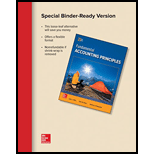
Introduction:
Net
The difference between the
Payback Period:
The time required to cover the cost of investment refers to payback period. The company prefers shorter payback period that has less risks compared to longer payback period.
Requirement-1:
To compute:
The annual expected net cash flows of Project A and Project B of Aikman Company that indicates the financial stability of the company.
Answer to Problem 2BPSB
Solution:
Net cash flows for Project A:
Net cash flows for Project B:
Explanation of Solution
The annual expected cash flows is computed by using the below formula:
Therefore the annual net cash flow of each project is calculated as below:
Project A:
Net income:
Net Cash Flow
Depreciation for Project A:
Given,
Cost of Machinery/Investment:
Useful life of an Asset:
Annual Depreciation=
Project B:
Net income:
Depreciation Expense:
Net Cash Flow
Depreciation for Project B:
Given,
Cost of Machinery/Investment:
Useful life of an Asset:
Annual Depreciation=
Depreciation expense is calculated by using the formula:
Hence the net cash flow for Project A is $99,900 and Project B is $105,900. Project B has the higher net cash flows compared to Project A that indicates Project B is financially sound than Project B. However Project A also has equally good cash flows.
Requirement-2:
To determine:
The payback period of Project A and Project B of Aikman Company to determine the investment risk of projects.
Answer to Problem 2BPSB
Solution:
Payback period of Project A: 2.4 years
Payback period of Project B: 2.3 years
Explanation of Solution
The payback period is derived using the formula:
Calculation of Payback Period for Project A:
Given,
Cost of Investment:
Net Cash Flow (As calculated):
Payback period
Calculation of Payback Period for Project B:
Given,
Cost of Investment:
Net Cash Flow (As calculated):
Payback period
The shortest payback period has less risk and longer payback period has high risk. Hence from the computation of payback period of both the projects, Project B has shorter period compared to Project A. However there is no much difference in the payback periods of both the projects that indicates both has less risk of investment.
Requirement-3:
To compute:
The accounting
Answer to Problem 2BPSB
Solution:
The accounting rate of return for Project A is 33.3%
The accounting rate of return for Project B is 21.6%
Explanation of Solution
Explanation:
The accounting rate of return is calculated using the formula:
Project A:
Given,
Net income:
Average investment:
Accounting rate of return= $39,900/$120,000*100=33.3%
Project B:
Given,
Net income:
Average investment:
Accounting rate of return=
From the computation of accounting rate of return Project A has higher accounting rate of return compared to Project B. Hence the company can proceed with investment in Project A.
Requirement-4:
To determine:
The
Answer to Problem 2BPSB
Solution:
The net present value at discounted rate of 8% of Project A is .
The net present value at discounted rate of 8% of Project B is .
Explanation of Solution
The present value of net cash flows at discounted rate is calculated by using the formula:
Project A:
Net cash flow as calculated for Project A is $99,900
Cost of investment is $240,000
Present value of 1 at 8% Annuity for 4 years is 3.3121 (Taken from the Annuity table)
The below table shows the calculation of net present value for Project A:

Project B:
Net cash flow as calculated for Project A is $105,900
Cost of investment is $240,000
Present value of 1 at 8% Annuity for 3 years is 2.5771(Taken from the Annuity table)
The below table shows the calculation of net present value for Project B:

From the computation of net present value of cash flows, Project A has the higher present value of $90,879 compared to Project B that indicates Project A is highly profitable.
Requirement-5:
To discuss:
The project that would be recommended to the management and the explanation for the recommendation.
Answer to Problem 2BPSB
Solution:
Project A is recommended to the management.
Explanation of Solution
Project A has higher present value of cash flows of $90,879 and accounting rate of return
of 33.3% when compared to Project B.
Hence comparing the net present value and accounting rate of return of both the projects, the Project A is highly profitable to proceed with.
Want to see more full solutions like this?
Chapter 25 Solutions
Loose Leaf for Fundamental Accounting Principles
- Can you solve this general accounting problem with appropriate steps and explanations?arrow_forwardPlease provide the correct answer to this financial accounting problem using valid calculations.arrow_forwardPlease provide the solution to this general accounting question using proper accounting principles.arrow_forward
- Can you solve this financial accounting problem using appropriate financial principles?arrow_forwardI am looking for the correct answer to this financial accounting problem using valid accounting standards.arrow_forwardI need assistance with this general accounting question using appropriate principles.arrow_forward
- Please provide the solution to this general accounting question using proper accounting principles.arrow_forwardI need help solving this financial accounting question with the proper methodology.arrow_forwardPlease show me how to solve this financial accounting problem using valid calculation techniques.arrow_forward

 AccountingAccountingISBN:9781337272094Author:WARREN, Carl S., Reeve, James M., Duchac, Jonathan E.Publisher:Cengage Learning,
AccountingAccountingISBN:9781337272094Author:WARREN, Carl S., Reeve, James M., Duchac, Jonathan E.Publisher:Cengage Learning, Accounting Information SystemsAccountingISBN:9781337619202Author:Hall, James A.Publisher:Cengage Learning,
Accounting Information SystemsAccountingISBN:9781337619202Author:Hall, James A.Publisher:Cengage Learning, Horngren's Cost Accounting: A Managerial Emphasis...AccountingISBN:9780134475585Author:Srikant M. Datar, Madhav V. RajanPublisher:PEARSON
Horngren's Cost Accounting: A Managerial Emphasis...AccountingISBN:9780134475585Author:Srikant M. Datar, Madhav V. RajanPublisher:PEARSON Intermediate AccountingAccountingISBN:9781259722660Author:J. David Spiceland, Mark W. Nelson, Wayne M ThomasPublisher:McGraw-Hill Education
Intermediate AccountingAccountingISBN:9781259722660Author:J. David Spiceland, Mark W. Nelson, Wayne M ThomasPublisher:McGraw-Hill Education Financial and Managerial AccountingAccountingISBN:9781259726705Author:John J Wild, Ken W. Shaw, Barbara Chiappetta Fundamental Accounting PrinciplesPublisher:McGraw-Hill Education
Financial and Managerial AccountingAccountingISBN:9781259726705Author:John J Wild, Ken W. Shaw, Barbara Chiappetta Fundamental Accounting PrinciplesPublisher:McGraw-Hill Education





